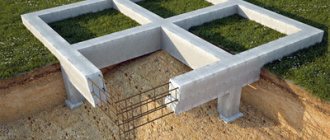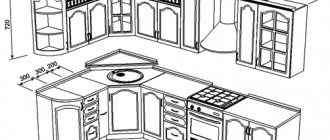Disassembling a single-lever kitchen faucet + photos and videos.
If the water pressure in the kitchen or bathroom has become much less than it was before, you cannot turn off the water tap tightly, which means you need to repair the plumbing. To do this, it is not necessary to involve specialists, since you can disassemble a single-lever kitchen faucet with your own hands. Let's find out how to disassemble the faucet and repair it.
Device and types
Before you begin renovation work, you first need to understand the structure of the faucet in the kitchen. Such a faucet, as a rule, has one adjustment handle, which is secured with linings using one screw. It can be with a cartridge or a ball. The main element of such faucets is the cartridge. Inside it, cold and hot water are mixed. It is located in the case and there are 3 perforated ceramic discs inside. Thanks to a special production technology, it is possible to ensure a tight fit of the discs, and they do not allow water to pass through.
During operation of the system, both disks remain stationary, and the third, movable disk, is connected to the shift lever. When the position of the handle changes, the hole shifts, and a certain amount of hot and cold water is supplied, which is mixed in the body. Let's take a closer look at what a ball mixer consists of. Its name comes precisely from its design feature. The device contains a hollow ball, which is made of stainless steel and placed in the faucet body. When you turn the handle, the ball begins to move due to a special pin, and water begins to flow. The presence of special rubber gaskets helps ensure the tightness of the system.
How to disassemble a cartridge lever faucet
A mixer of this type usually has to be disassembled when the cassette becomes unusable. This work involves several stages.
You need to start disassembling the faucet by removing the decorative elements
First, using a flat screwdriver or knife, remove the decorative plug from the body of the product, under which there is a screw that secures the mixer lever. Most often, it has a slot in the form of an internal hexagon and is unscrewed using the appropriate key. By unscrewing this screw, you can remove the handle from the device body. Removing the lever gives access to the locking nut and the adjustment rod.
This part should be made of sanitary bronze, and covered with a protective plastic cap on top. The quality of the product can be judged by the material from which the adjusting rod is made. The cassette lever, made of plastic, indicates that you are dealing with plumbing equipment of the lowest price segment and of appropriate quality.
After removing the control handle, you need to remove the decorative semicircular ring. It is equipped with a thread and can be easily unscrewed by hand. The cartridge is fixed in the mixer body using a clamping nut, and to remove it, you need to unscrew it. There are two types of nuts: stamped from thin sheet metal and solid cast from sanitary bronze. The first type of fastener should be unscrewed extremely carefully, as it can easily become deformed. The cast nut can be unscrewed using an adjustable or open-end wrench of the required size.
To get to the cartridge, you need to unscrew the clamping nut
By unscrewing the clamping nut, you can pull the cassette out of the valve body. In this case, it is necessary to pay special attention to the condition of the rubber sealing rings in the lower part of the product. It is also very important to remember in what position the cartridge was inside the product body, so that later you can correctly install the new part. After the cassette is removed, you should measure its diameter using a caliper.
Cartridges for lever mixers are available in two main sizes - 30 and 40 mm. The new part must match the dimensions of the one that was dismantled.
When installing a new product, you need to make sure that it is inserted into the mixer in the same position as the old one was. Inside the body, the faucet has special beads, thanks to which the cartridge will be securely fixed. There are indentations on the cassette body that correspond to these protrusions. The part must be inserted in such a way that the beards and recesses coincide with each other. It should be noted that in different models of mixers there may be some differences in the design of the lower part.
We disassemble the faucet with our own hands
Tools and accessories
Before you start studying the material on fixing a faucet, you need to prepare all the tools that will be needed for the job:
Small screwdriver.- Hexagon (key).
- Pliers.
- Adjustable wrench.
- Lubrication.
You will also need a small piece of fabric, which will make it possible to protect the chrome elements when removed. To protect your hands, use gloves.
How to disassemble the mixer
In order not to damage the elements when disassembling a single-lever kitchen faucet, we suggest considering how to disassemble it correctly. The sequence in which the actions will be performed will depend on the design features of the crane. Let's look at each type separately.
With cartridge
You can disassemble the faucet with a cartridge according to the sequence shown in the video at the end of this article.
How to disassemble a ball-type mixer
Despite the fact that cartridge models are much more popular, ball models are also in demand. He is shown in this video
Preparation
Before disassembling the two-valve mixer, at the preparatory stage you should make sure that you have the necessary tools. You will need:
- Phillips and flathead screwdrivers,
- adjustable wrench,
- fum tape,
- insulating tape,
- silicone sealant,
- rags.
Next, the water supply to the main taps is shut off. To protect the surface, the sink or bathtub is covered with foam rubber or rags. It is recommended to relieve excess pressure before dismantling. To do this, both taps are unscrewed to the limit and left in that position.
How to fix a single lever faucet
The order of actions that should be performed will depend on the malfunction that has appeared. Let's figure out how to fix the faucet depending on the problem that arises.
Removing the blockage
It is very easy to understand that you have a blockage - there will be weak water pressure. To remove the blockage you need:
- Disassemble the single lever kitchen faucet by removing the nut from the spout.
- Take out and rinse the mesh well, remove all abrasive substances.
- Install everything back.
This is the simplest of all possible faults.
How to replace rubber seals
If the elements are not tightly sealed, the faucet will begin to leak. In this situation, you should replace the rubber seals with new ones (gaskets). This can be done as follows, as shown in the video:
How to troubleshoot a switch
If difficulties arise when switching the operating mode of the faucet, you can fix the problem this way. When choosing a lubricant, pay attention to universal-type formulations, which are offered by many manufacturers and about which there are positive reviews.
How to replace rubber seals with spools
When the rubber seals are ready, you can start working:
Move the valve lever to the “closed” position.- Disassemble the structure, disconnect the shower hose.
- Remove the decorative cap and unscrew the screw fastening. Take out the switch button.
- Carefully remove the spool.
- Replace the seals and lubricate them with a special paste for additional tightness.
- Reassemble the switch in reverse order.
Helpful advice! To avoid problems with installing the spool, first moisten the rubber seals with water.
How to Replace Switch Springs
If you have difficulty returning the switch to its original position, the spring may need to be replaced. For repairs, it is worth choosing a spring with a smaller diameter and with an additional protective coating.
Repairs should be carried out in the following sequence:
- Disassemble the faucet.
- Take out the rod on which the spring is screwed and remove it.
- Using pliers, screw the new spring onto the rod.
- Assemble and install the switch.
As you can see, this is not difficult at all.
Repair of a two-valve mixer
Mixer faucet
Repairs may affect both the valve axleboxes and the spool valve.
How to repair crane axle boxes
An axle box with a rubber gasket is a screw with a rubber disk gasket attached to its end. When the valve rotates, the position of the gasket relative to the seat changes. As it approaches the saddle, the water pressure decreases, and as it moves away, it increases. This type of faucet is undemanding to water quality.
In ceramic designs, the locking mechanism consists of two ceramic parts with holes. They are polished so they fit perfectly together, which ensures tightness. When the holes line up, the valve is fully open. Solid impurities that get between the discs can damage the ceramics.
If a faucet axle box with a rubber gasket is installed and water flows from under the flywheel, you need to disassemble the structure: remove the retaining ring, unscrew the faucet axle box completely and remove the internal part on which two thin rubber rings are installed. It was because of their wear that the leak appeared. These elements are replaced.
The axle valve does not completely shut off the water if the main sealing gasket is damaged or naturally worn out. If it looks intact, then as a temporary measure you can turn the old one over, that is, install it on the other unfinished side.
If the gasket ruptures or is pressed through, the part must be replaced with a similar one. You can find the right one by purchasing a repair kit. If this is not possible, it is cut out yourself from a piece of rubber.
The procedure for making a homemade gasket:
- A square piece is cut out of rubber, approximately equal in size to the gasket, but not smaller than it.
- Make a hole in the center with scissors. The main thing is to make it not too big. It is necessary that the gasket is put on tightly.
- Then the protruding areas are trimmed in place with a knife or scissors.
If parts of a ceramic faucet axlebox fail, it cannot be repaired. It is simply replaced with a new one, since the discs are not sold separately, and their repair (polishing) is too painstaking, although possible.
In addition, you need to inspect cavities and rubbing surfaces, remove blockages, beige or red deposits indicating rust, and lime deposits. The use of special products that dissolve rust and limescale will greatly facilitate the procedure.
Spool valve repair and disassembly
If water flows from both the faucet and the shower head at the same time, the changeover spool valve is faulty. It fails due to wear or the ingress of foreign objects. To get to it you need:
- Remove the decorative plug and unscrew the fastener.
- Remove the valve.
- Take a spanner and place it on the mount. Unscrew while holding the upper rod with a wrench.
- Remove the top part. There is a valve inside that can be removed towards the spout.
- Unscrew the adapter to the spout at the bottom.
After this, the valve is freely removed. The gaskets on it are replaced with similar ones.
If this does not help, remove the lock washer from the upper part and pull out the rod. There are two rubber gaskets there. They can also be changed.
Cartridges
Replacing sealing gaskets does not always solve all problems, and in this case it may be necessary to replace the faucet cartridge. You can do the repair work yourself, the main thing is that you buy the necessary tools and a suitable replacement part.
How to replace a cartridge
Let's take a closer look at how to replace the cartridge in a faucet so you can do it yourself. The work should be performed in the same way as shown in the video:
Please note that the new cartridge must be the same as the old one. It is better to buy a new element if you have an old one on hand.
To ensure that your new cartridge lasts as long as possible, choose products only from trusted manufacturers.
How to repair a cartridge
Before you buy a new cartridge, make sure that the old one is definitely beyond repair. How to perform repairs, watch the video:
Effective tips on how to unscrew a stuck faucet axle
The faucet axlebox is the main element that is responsible for supplying and regulating the flow, as well as the temperature of water, due to the rotation of the valve. Faucets with one or two levers are equipped with brass fittings, which over time succumb to plaque and rust, which significantly complicates the process of dismantling and repairing a failed faucet axle box.
In such a situation, it becomes almost impossible to unscrew the threaded connection for restoration or replacement. The main mistake of many homeowners is that without thinking twice they pick up the key and forcefully try to unscrew the valve axle.
However, brittle brass may not withstand the pressure and may crumble. Repairs may be complicated and time-consuming, or the mechanism will have to be completely replaced.
Therefore, you should properly prepare for repairs. When performing it, you first need to arm yourself with the appropriate tools and basic knowledge about dismantling methods.
Prevention
The problem is that repair work cannot always restore the functionality of the mixer, and then you have to buy a new one. To prevent this from happening ahead of time, you should first buy a good mixer model and carry out relatively simple preventive actions in a timely manner.
So, we recommend:
Buy a brass faucet. Such products have high strength characteristics and last much longer than products made from silumin.- Install a good water filter at the very beginning.
- Read the instructions that come with each faucet, which describes what to do before installation and during repair work. Videos on disassembling a ball valve will help you avoid common mistakes.
- Treat the joint with sealant. For threaded connections, it is better to use FUM tape.
- Carry out preventive inspections on time and be sure to change seals.
What is a Mayevsky crane?
Attempts to solve the problem of air locks in heating systems were made at the beginning of the 20th century. For this purpose, taps were actively used - they coped with the task of bleeding air, but they were often used not only for their intended purpose, but also to drain water from the heating circuit for other purposes.
Uncontrolled coolant discharge caused damage to the heating network, as it could cause the formation of additional air pockets and changes in pressure in the pipes. In addition, due to the high temperature of the water entering the radiators, the people using it could also be harmed.
Inventor Ch.B. Mayevsky, after whom the air vent is named, did not come up with the valve itself for venting air, but a method for sealing its parts. Mayevsky proposed connecting the parts of the crane cone to cone. This made it possible to maintain the tightness of the heating network unit in the closed position. In addition, this design made it inconvenient to draw water from the heating device.
Design and principle of operation
The Mayevsky tap is made from corrosion-resistant materials such as brass. The outside of the metal case may have a plastic shell to give a more aesthetic appearance.
The main parts of the Mayevsky crane design:
- housing with inlet calibration and outlet drain holes,
- cone needle valve,
- sealing ring,
- valve or locking screw with a socket head or screwdriver.
The design of the air vent can be changed and supplemented with other elements, have different thread diameters, while the principle of operation remains the same.
In the closed position, the needle valve maintains the tightness of the system and does not allow coolant to leak out. When you turn the locking screw, the needle moves, freeing the drain hole.
Air flows from the battery into the calibration hole of the valve and is released out through the drain hole. After the air is released, the resulting cavity is filled with hot water, coolant circulation is restored, and the pressure inside the pipes is equalized.
How to prevent possible breakdown in the future?
No matter how expensive a two-valve mixer is, without proper care and careful handling, damage is inevitable.
Basic rules that can extend the service life of your crane:
- You need to open and close the valves calmly, without sudden movements, so as not to break the tap.
- It is better to install a silicone gasket, since it has increased wear resistance compared to rubber.
- Regularly inspect connections for leaks.
- At the first signs of leaks, it is necessary to immediately replace the gasket, so that later you do not have to change the entire plumbing fixture, which will be much more expensive.
- When disassembling the structure, it is necessary to clean the parts from contamination.
By following these simple rules, you can extend the performance of your faucet for several years.
If a malfunction of the faucet in the bathroom is detected, it is recommended to carry out timely repairs so that in the future you do not have to buy a new device. The repair process is shown in the video:
It is better to do the replacement yourself, since this option is much cheaper than calling a plumber. And you may have to spend a little time and effort, but you will be confident in the reliability of the design.











